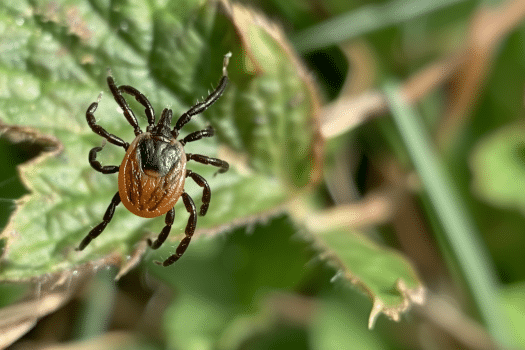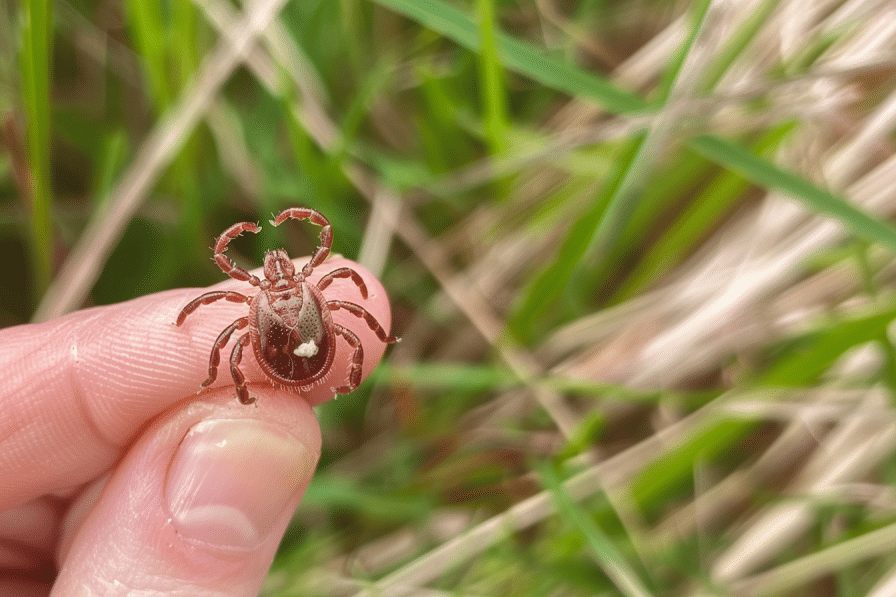Over 60% of Massachusetts is covered in forests, making it the 8th most forested state in the U.S. Forests can invite all kinds of pests including ticks. Ticks are a nuisance when you are enjoying some time in the outdoors hiking or camping. They are notorious for spreading dangerous diseases. Therefore it becomes important to be aware of the different kinds of ticks that exist and the diseases they spread to safeguard yourself from them.
Black-Legged Ticks (Ixodes scapularis), commonly known as deer ticks
The black-legged ticks are the most common in Massachusetts and are notorious for spreading Lyme disease. Adult black-legged ticks are about the size of a sesame seed and have a reddish body with black legs.

Diseases Spread:
- Lyme Disease:
- Erythema Migrans (EM) Rash: Often (but not always) characterized by a bull's-eye pattern
- Flu-like Symptoms: Fever and chills, fatigue, muscle aches, joint pain, headache, swollen lymph nodes.
- Neurological Symptoms (In severe cases): Facial palsy, meningitis, peripheral neuropathy, radiculoneuritis.
- Anaplasmosis:
- Symptoms typically appear 1-2 weeks after a tick bite and include fever, headache, chills, muscle pain, nausea, abdominal pain, cough, and confusion. In some cases, a rash may occur but it is less common compared to other tick-borne diseases.
- Severe cases can result in difficulty breathing, hemorrhage, renal failure, and neurological problems.
- Babesiosis:
- Symptoms include fever, chills, sweats, headache, body aches, loss of appetite, nausea, fatigue, and dark urine. Severe cases can cause hemolytic anemia (destruction of red blood cells), jaundice, and organ failure.
- People at higher risk for severe disease include those who are immunocompromised, elderly or have underlying health conditions such as splenectomy (removal of the spleen).
2) Lone Star Tick (Amblyomma americanum)
Recognizable by the white dot or "lone star" on the back of the adult female, this tick is aggressive and actively seeks out hosts.

Diseases Spread:
Ehrlichiosis
Early Symptoms (typically appear 1-2 weeks after tick bite). Symptoms include fever, chills, headache, muscle aches, fatigue, nausea, vomiting, and joint pain.
Symptoms in severe cases include breathing issues, internal bleeding, and organ failure.
Tulerimia
Symptoms include skin ulcers, swollen lymph nodes, fever, chills, headache, fatigue, and muscle aches.
How to Protect Yourself from Ticks?
Dress Appropriately: Wear long sleeves and tuck your trousers in your socks when enjoying the outdoors or while hiking or camping.
Use Tick Repellents: Apply EPA-approved tick repellent containing picardin, DEET, or oil of lemon eucalyptus.
Conducts Ticks Checks: Thoroughly check yourself and your pet after spending time outside. Carefully inspect the armpits, behind the knees, and the scalp. Showering after spending time outwards will also prevent any tick bites.
Ticks are commonly found in bushes, trees, or areas with vegetation. If you live around forests or have a yard, chances are you might face a tick infestation. For such situations, it's best to contact a tick removal service like RidAway. It is EPA-approved, state-licensed, and certified, and uses biologically friendly pesticides that are safe for your family and pets.
For a quick solution to an urgent intrusion, RidAway is ready to come to your rescue.

